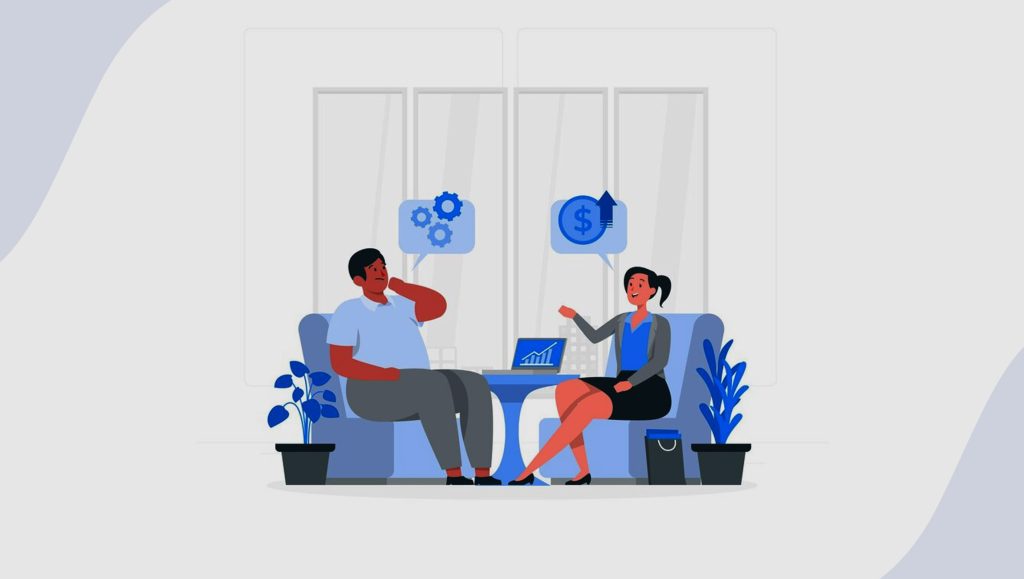Buyer intent signifies a lead’s interest in your good or service. It contains behavioural indications that organizations may use to determine the current stage at which a potential client is so that marketing and sales teams can effectively direct them through the buying process. Knowing it is a potent approach to increase the number of qualified leads you have. With the aid of its data, you may examine the purchasing cycle of your clients and gain insightful knowledge about what you can do to support them along the way. When used correctly, it can increase revenue and your lead pipeline.
B2B Buyer Intent Data: What Is It?
Buyer intent data is a behavioural indicator of a person’s interest in a given good or service. It reveals the propensity of a prospect to make a purchase. In other words, intent data is the likelihood or level of prospects’ propensity to purchase a specific good or service. It is frequently influenced by a person’s physical and online purchasing habits. Intent data is sales intelligence that details the customers actively looking for your company’s products and services.
Why is intent data essential for businesses?
The sales and marketing teams can take a data-driven approach to their campaigns because of the insightful insights from intent data. It makes the best use of its time, money, and resources and raises the calibre of the leads they provide. You can develop content strategies and customer outreach initiatives that meet the expectations of your ideal customers with the aid of intent data.
How to Fuel Your Content Marketing Strategies with Buyer Intent Data?
Your marketing team can provide consumers with more individualized and valuable experiences at every point of the buying process by leveraging their understanding of buyer intent. It can also aid in audience trust-building and content promotion for better ROI. Here are some strategies for maximizing your content marketing efforts by utilizing buyer intent.
Read More: SalesTechStar Interview with Joe Rohrlich, Chief Executive Officer at Recurly
1. Recognize Your Ideal Clients
You will only know who to target with your content if you thoroughly understand your ideal consumer. Therefore, how do you plan to implement an efficient content marketing strategy? Understanding customer intent and producing relevant content require a deep comprehension of your buyer personas.
2. Recognize Opportunities When They Arise
Identifying prospects early in the purchase process is the most evident advantage of intent data. Customers are more inclined to purchase from companies that initially get in touch with them and give them all the information they require. When you interact with customers from the outset of their decision-making process, it becomes simpler to comprehend their expectations.
3. Each Stage of the Buyer’s Journey Should Have Content
When making a purchase, people and businesses frequently travel the same route. Before making a choice, the trip often includes researching, analyzing the pros and cons of several possibilities, and evaluating a solution. You can offer pertinent content to assist your prospects and customers in making wise decisions during this “buyer’s journey” to optimize it for them.
4. Personalize Your Content to Forge More Powerful Bonds
According to 77% of B2B marketing and sales experts, tailored marketing initiatives improve client relationships. While according to 55%, marketing customization increases sales conversion and future growth rates.
5. Syndicate and Market Your Content
Knowing which platforms and channels to share is just as crucial as developing content. Your content production efforts can only be worthwhile if your promotion and syndication efforts are in sync.
6. Upsell and decrease customer churn
Providing consistent, reliable information is one of the best ways to gain consumer trust and lower turnover. Thanks to intent data, you may deliver precious information to customers after understanding precisely what they seek. Your prospects become more loyal and trusting as a result. You can use your gained trust to upsell your goods and services and boost sales.
7. Reach out to prospects at the crucial moment
You can identify your high-value consumers using intent data. Afterwards, you may focus on them and conserve your resources, time, and money. Furthermore, it leads to high-quality interactions. Intent data enables you to provide customers with accurate and pertinent information at the Zero Moment of Truth, allowing them to make wiser purchasing decisions.
With so much customer and company data coming in daily, it is crucial to gain insightful information for wiser decision-making. Data on B2B buyer intent assist sales and marketing teams in streamlining their operations and enhancing business results. During a customer’s B2B purchasing process, your sales representatives can access about 5% of their time. The strategic focus of sales teams is changing due to a need for more time with customers and quickly changing buying dynamics, which are propelled by digital buying behaviour. Buyer intent can offer significant insight into the purchasing behaviour of your prospects. You’ll be able to focus your efforts more precisely; as a result, allowing your reps to put their time where it counts. By adequately interpreting intent data, you may increase your prospecting and outbound efforts, score the appropriate leads, and develop focused, relevant, and precise content and campaigns.
Read More: Unveiling the Importance of Customer Lifetime Value





















